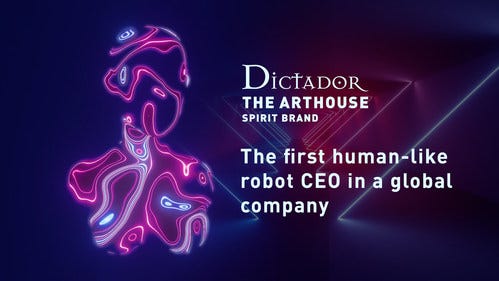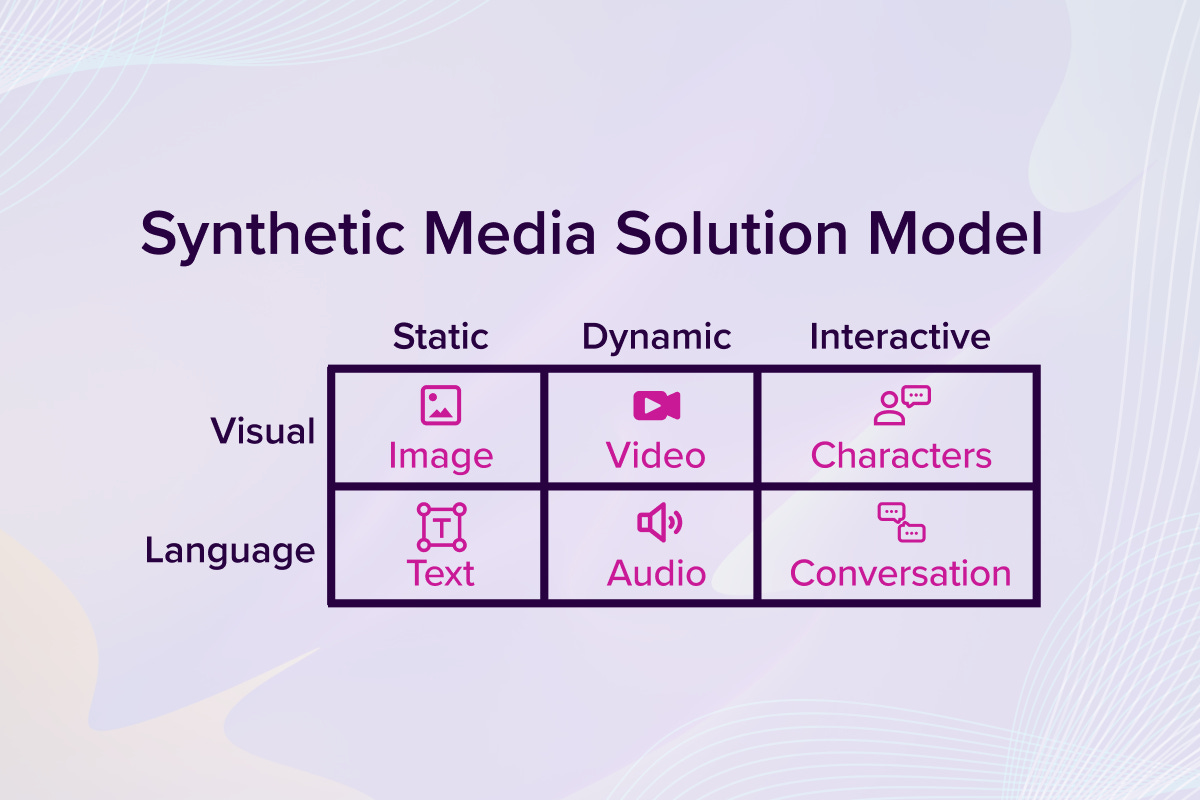The robot overlords may not have to take over the world by force. What if we invited them to take over?
That is what Colombian rum maker Dictador says they have done. The company announced yesterday that its new CEO and spokesperson is Mika. No last name was given. According to the media release:
“The new CEO is a human-like robot, incorporating AI. The robot is a woman, named Mika. She will be the official face of Dictador, the world’s most forward-looking rum producer … Mika is a female, a more advanced version of her sister prototype, Sophia, ‘activated’ in 2015 by Hanson Robotics Ltd." Is this synthetic media?
While a warehouse or factory robot is not, I’d say this embodied AI-driven character is synthetic media. The virtual part of the robot is its personality and conversational ability. Instead of looking at a screen to see and interact with Mika, you look at a user interface that happens to be a robot.
No matter your definition of synthetic media, this is definitely a marketing stunt. It is positioned as the world’s first robot to take the helm of a global company as CEO. Granted, Mika is not a person and therefore lacks the status to enter into contracts or conduct financial transactions. Maybe she will just delegate all of those responsibilities, but one thing it doesn’t have to delegate is PR. Hanson Robotics knows how to create talking robots, and there are no other CEO robots. That is all the PR you need.
Virtual Workers and Virtual Decisions
This does raise an interesting situation as robots, broadly defined to include autonomous virtual beings, are taking on more and more jobs. Greg Cross, the CEO of Soul Machines, tied this directly to the Great Resignation that has resulted in human workers leaving jobs as they reorient their life priorities in the wake of the pandemic. We see evidence of this across industries where virtual assistants are implemented to take on jobs that do not interest workers.
This leads to an important question. What decisions are the robots empowered to make? A CEO’s role is largely decision-making. It is about how and where to deploy resources, who to engage with, and how to talk about it.
Robotics Process Automation (RPA) is largely about performing repetitive tasks with strict rules about what should and can be done. The functional scope is narrow. The solutions are deterministic. Autonomous virtual beings / humans that execute complex interactions such as conversation or responding to other dynamic data inputs use probabilistic architectures. The scope is still narrow compared to what we expect from humans, but uncertainty enters the equation when decisions are made.
The question is what decisions will be delegated to the robots, and where will we or a company or the law draw the boundaries around what cannot be delegated. The boundaries are already shifting as the technology improves and the perceived risks decline.
Synthetic media today is largely created for passive consumption as I laid out in the 6 Segments Model. The interactive column is where a virtual CEO resides, and when it helms a real company, the virtual being is making real-world decisions.
The Rum Running Robot
It is not surprising that a consumer brand selling a pricey product without objective value was the first to have fun with the idea of a robot CEO. In the luxury goods market, perception is reality even when the reality is that the robot cannot actually be the CEO…today. But, then again, what is reality?






